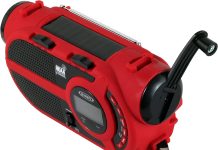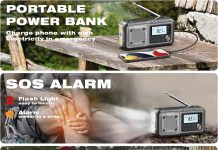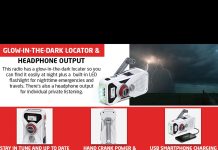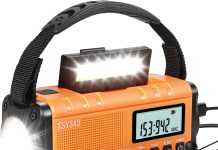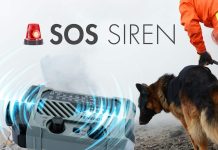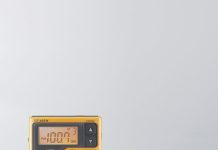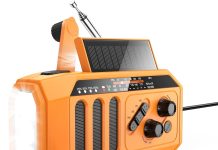Imagine being in a dire situation, isolated from the world, desperately needing vital information. In emergencies, we rely on radios to keep us updated and connected. But what if there was a way to receive emergency broadcasts and access regular AM/FM radio stations?
That’s the question on many minds – can emergency radios serve this dual purpose? In this article, we explore the potential of these lifesaving devices to bridge the gap between emergency broadcasts and regular radio programming, offering a glimmer of hope amidst uncertain times.
Review contents
Can Emergency Radios Be Used To Listen To Regular AM/FM Radio Stations?
Introduction
When it comes to emergency preparedness, having reliable communication is essential. Emergency radios are specifically designed to provide important information during times of crisis, but can they also be used to listen to regular AM/FM radio stations? In this article, we will explore the capabilities of emergency radios and investigate whether they can be used as a reliable source of entertainment and news during non-emergency situations.
What is an Emergency Radio?
Before delving into the topic, let’s first understand an emergency radio. An emergency radio, also known as a crank radio or a hand-crank radio, is a portable device that allows you to receive information even when other means of communication, such as electricity or cellular networks, are unavailable. These radios often come equipped with multiple features, including the ability to receive AM/FM broadcasts and weather alerts, and some models even have built-in flashlights and USB charging ports.
Difference Between Emergency Radios and Regular Radios
While both emergency radios and regular radios serve the purpose of receiving radio broadcasts, there are some critical differences between the two. Regular radios, such as the ones commonly found in our homes or vehicles, rely on an external power source, usually electricity or batteries, to operate. On the other hand, emergency radios are designed to have additional power sources, such as hand-crank mechanisms or solar panels, ensuring that they can function even in emergencies when power is scarce.
AM/FM Radio Frequencies
To understand whether emergency radios can receive AM/FM radio stations, it is essential to have a basic understanding of how these radio frequencies work. AM, or amplitude modulation, and FM, or frequency modulation, are two different radio signal methods. AM frequencies typically range from 530 to 1700 kilohertz (kHz), while FM frequencies range from 88 to 108 megahertz (MHz). Regular radios are tuned to these specific frequencies, allowing them to receive and play AM or FM broadcasts.
AM/FM Reception on Emergency Radios
Fortunately, most emergency radios are designed to receive both AM and FM broadcasts. This means that when power is readily available during non-emergency situations, you can use your emergency radio just like a regular radio to listen to your favorite AM/FM radio stations. However, it is important to note that the reception quality of emergency radios may vary compared to regular radios, particularly in terms of range and clarity.
Factors Affecting AM/FM Reception on Emergency Radios
Several factors can affect the AM/FM reception on emergency radios. One significant factor is the size and quality of the built-in antenna. Some emergency radios have small internal antennas, which may limit their ability to receive signals efficiently. Additionally, the distance and location from the radio station’s broadcast tower can impact the reception quality. Interference from other electronic devices or physical obstacles, such as walls or buildings, can impede reception.
Enhancing AM/FM Reception on Emergency Radios
While emergency radios are designed to have built-in antennas, there are steps you can take to enhance the AM/FM reception and improve the listening experience. One option is to use an external antenna specifically designed for AM/FM frequencies and connect it to your emergency radio. This can significantly improve the radio’s ability to pick up signals, mainly if you are in an area with weak reception. Another method is to position the radio near a window or in an open space, away from electronic devices that may cause interference.
Using External Antennas
Using an external antenna for your emergency radio can significantly enhance the reception quality. These antennas can be easily attached to your radio through a built-in port or an adaptor. External antennas are designed to capture radio signals better, even those that may be weaker or distant. They can provide a broader reception range, allowing you to tune into AM/FM radio stations that may not have been accessible with the built-in antenna. Investing in a high-quality external antenna can be a worthwhile addition to your emergency preparedness toolkit.
Importance of External Power Source
In addition to ensuring good reception, having an external power source is essential for using an emergency radio to listen to regular AM/FM radio stations. While emergency radios often come with built-in batteries or hand-crank mechanisms, these may not provide sufficient power for extended listening periods. An external power source, such as regular or rechargeable battery packs, can ensure a consistent and uninterrupted power supply. This is particularly important if you plan to rely on your emergency radio for entertainment or news during extended periods without access to electricity.
Conclusion
In conclusion, emergency radios can listen to regular AM/FM radio stations. While there may be some variations in reception quality compared to regular radios, most emergency radios are designed to receive AM/FM broadcasts. Factors such as antenna size, location, and interference can affect the reception, but options, such as external antennas, are available to enhance the listening experience. It is also crucial to have an external power source to ensure a reliable and uninterrupted power supply.
So, whether you are preparing for an emergency or want to enjoy your favorite radio stations, an emergency radio can be a valuable tool for staying connected and informed.


